- News
- Reviews
- Bikes
- Components
- Bar tape & grips
- Bottom brackets
- Brake & gear cables
- Brake & STI levers
- Brake pads & spares
- Brakes
- Cassettes & freewheels
- Chains
- Chainsets & chainrings
- Derailleurs - front
- Derailleurs - rear
- Forks
- Gear levers & shifters
- Groupsets
- Handlebars & extensions
- Headsets
- Hubs
- Inner tubes
- Pedals
- Quick releases & skewers
- Saddles
- Seatposts
- Stems
- Wheels
- Tyres
- Tubeless valves
- Accessories
- Accessories - misc
- Computer mounts
- Bags
- Bar ends
- Bike bags & cases
- Bottle cages
- Bottles
- Cameras
- Car racks
- Child seats
- Computers
- Glasses
- GPS units
- Helmets
- Lights - front
- Lights - rear
- Lights - sets
- Locks
- Mirrors
- Mudguards
- Racks
- Pumps & CO2 inflators
- Puncture kits
- Reflectives
- Smart watches
- Stands and racks
- Trailers
- Clothing
- Health, fitness and nutrition
- Tools and workshop
- Miscellaneous
- Buyers Guides
- Features
- Forum
- Recommends
- Podcast
feature
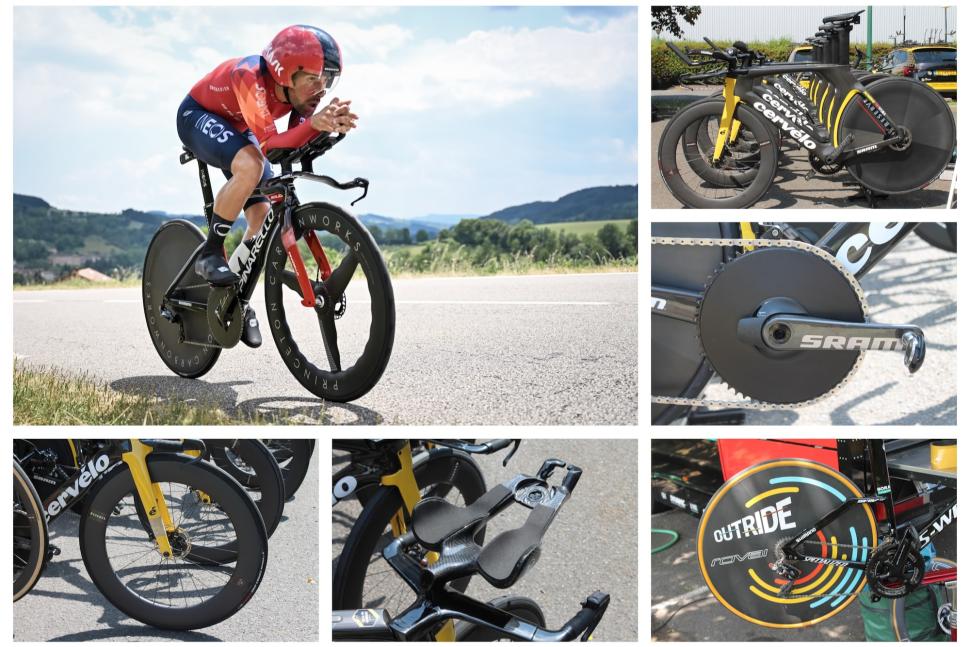 2023 Tour de France TT bikes
2023 Tour de France TT bikesWhat makes a Tour de France time trial bike so fast?
Tour de France riders will tackle the only time trial of the 2023 race on Tuesday 18th July and, with the standings so tight at the top, it could prove decisive in determining the overall winner. Being an exceptional athlete is what matters most, of course, but here's the tech that’ll help them shave off the seconds in the race of truth.
The route from Passy to Combloux is short – 22.4km (13.9 miles) – but far from flat with the 2.5km (1.6 miles) Côte de Domancy, which comes towards the end of the ride, averaging 9.4%. The gradient eases afterwards, but riders will still be heading uphill to the finish, which could influence equipment choices. Although nothing like the mountain time trial that was pivotal in this year’s Giro d’Italia, riders will need to climb from the lowest altitude of 545m up to 974m. Across the whole of the stage, there's over 600m of elevation gain so this is likely to favour the climbers who can time trial rather than the outright TT specialists. It'll be intriguing to see who comes out on top.
Pic: ASO-Billy Ceusters
Geometry
Time trial bikes tend to have steeper frame angles than road bikes, the idea being to pivot the rider further forward around the bottom bracket for a more aerodynamic, flat-backed riding position.
Bike geometry 101: Learn why frame angles & trail matter
Pic: ASO:Billy Ceusters
Pinarello’s Bolide F time trial bike, for instance, as used by Ineos Grenadiers, has a 77° seat angle whereas the brand’s Dogma F road bike’s seat angle is between 72° and 74.4°, depending on the frame size.
Pinarello announces Bolide F as its “fastest bike ever”
A time trial bike’s head tube is also much shorter, as a rule. It’s 96mm on a 52cm Pinarello Bolide F compared with 123mm on an 53cm Dogma F.
The front end of most high-end time trial bikes is kept low by a stem that is integrated into the frame. Again, the Pinarello Bolide F (above) is a good example, as is the Colnago TT1 (below).
If a rider needs a higher front end, that’s usually achieved through the use of a tall stack of spacers.
Colnago has gone for a very short head tube and a tall stack of spacers under each elbow rest to get the correct position. It says that this approach offers less drag than “a more voluminous frame”.
Check out Colnago's newly updated TT1
This Groupama/FDJ bike has a large rise from the base bar to the aero extensions on this Lapierre Aerostorm DRS.
Just as interesting: where the hell had the team ridden these bikes to get them this muddy? Is gravel TT now a thing?
Frame tubes
Time trial bikes come with frame tubes and features that use airfoil shaping to slip through the air with the minimum of drag.
Cervelo's P5, as used by Jumbo-Visma, is typical of the genre in its use of a super-deep head tube – with an external fork steerer – and a seat tube that is cut away around the leading edge of the rear wheel.
The seatstays are shaped for aerodynamics too, and they join the seat tube low to minimise the bike’s frontal area.
Check out the Cervelo P5 Tobias Foss rode to World Time Trial Champs win
Speaking of low seatstays, the ones on Colnago's TT1 run parallel to the ground for about half their length before kinking down to the rear dropouts. You can clearly see the shaping that's designed to cut through the air.
Pic: ASO-Billy Ceusters
The Merida Time Warp TT, as ridden by Bahrain Victorious, has a down tube that is dropped and cut away around the trailing edge of the front wheel in order to manage airflow in that area, while the fork legs are narrow and deep too.
It depends on the brand but frame tube profiles are often cut off square at the back rather than trailing away gradually. This is designed to maintain most of the aero performance of a deeper tube while saving weight and staying within UCI equipment rules.
All brands say that their time trial bikes have been designed using CFD (computational fluid dynamics) software and taken to the wind tunnel for validation.
Pic: ASO-Billy Ceusters
Pinarello added disc brakes to the latest version of the Bolide and, all other things being equal, they would have increased drag by 1.4%.
“This deficiency was recovered during the development process, thanks to a complete re-design of the seat tube, seatpost, top stays [seatstays], and chainstays, which counter-balanced the increased aerodynamic drag of the disc brake to create an aerodynamically equivalent bike and rider system,” Pinarello said.
Hidden components
Designers hide many components from the wind to improve aerodynamic efficiency. Fork crowns and stems are typically incorporated into a bike’s existing silhouette so as to minimise the frontal area.
Pic: ASO-Billy Ceusters
This (above) is Jayco-Alula's Luke Durbridge riding a Giant Trinity – with rim brakes – at the recent Critérium du Dauphiné.
Giant shelters the front brake arms behind the fork legs.
The rear brake is located on the underside of the chainstays, just behind the bottom bracket.
The Shimano Di2 Junction A box of this bike is zip-tied to the underside of the saddle.
Pic: ASO-Billy Ceusters
Where used, water bottles and cages are designed to integrate almost seamlessly with the frame.
Pic: ASO-Billy Ceusters
Although Alpecin–Deceuninck rider Fabio Van den Bossche has a bottle fitted to his Canyon Speedmax CFR (above), this angle shows how well it is sheltered from the wind.
There are barely any external cables or brake hoses on pro-level bikes these days – that goes for both TT and road bikes. Everything is hidden away so that it can’t disturb the airflow. Many top-level TT bikes, such as Colnago’s TT1, are designed only for electronic shifting – which is all the pros use. The complicated routing required is unsuitable for traditional cables.
Aerobars
The idea of aerobars is that they allow the rider to achieve an aerodynamically efficient position that has in many cases been honed in the wind tunnel, while being comfortable enough to stay in that position for the duration of the stage or race.
The horizontal distance between the centre of the bottom bracket and the tips of the extensions (including controls/levers) must not be more than 80cm for riders less than 180cm tall, 83cm for riders between 180cm and 189.9cm tall, and 85cm for riders 190cm and more, so Superman positions, with arms stretched out ahead of the rider, aren't allowed.
Pic: ASO-Billy Ceusters
There are also rules covering the difference in height between the forearm support and the highest point of the extension. It can't be more than 100mm for riders less than 180cm tall, for example. It's a little more for taller riders.
Most pro riders these days tend to go for a setup with their forearms angled upwards rather than horizontal, believing it helps in terms of both comfort and speed. This year, the maximum angle of the forearm support of the handlebar extensions has been increased from 15° to 30°.
You see large variations in riding positions (that could be a whole feature in itself). For example, EF Education-EasyPost's Richard Carapaz (above, who crashed out of this year's Tour de France on Stage One) goes for a high hand position and really tucks himself in behind.
Most riders use standard bars that are adjusted to suit their dimensions. The maximum dimension of the cross-section of each extension is 4cm, but they can be set further forward or back to get the right position.
This Jumbo-Visma rider, for instance, uses a standard bar with the extension set to his preferred distance. The height of the armrests and extensions can often be adjusted too.
Some riders have aerobars made especially for them. Ineos Grenadiers use custom 3D-printed bar extensions on key riders' bikes, for example. These are created by scanning each rider’s forearms in the most aerodynamic position and then 3D printing them in titanium.
The idea is that this allows each athlete to ride with no gap between the bar extensions and their forearms to keep drag to a minimum (Filippo Ganna, pictured below, isn't racing the Tour this year).
3D-printing titanium takes a long time but complex components can be made using this technique, Pinarello doesn’t need to invest in new manufacturing tools, and the design can be changed easily to suit different riders.
Consumers can have bar extensions custom-made too. How much? It’ll depend on the result of your preliminary assessment, but it’s not going to be cheap.
Grip and comfort
You see grip tape used extensively on base bars and aero extensions to stop riders’ hands from slipping, particularly when sweaty.
This is a Bora-Hansgrohe bike, for instance. The taping isn't especially pretty, but it's effective.
The mechanics have also added more grip tape inside the bottle cage to prevent any mishaps over bumpy roads.
Armrest padding can often look rough and ready but it's designed to be functional, providing enough cushioning without adding much weight.
Shifters
Multiple shifters are possible with the electronic systems that all pro teams use. This means that riders can change gear while their hands are positioned at the ends of the aero extensions – as they are most of the time – and also from the base bar when they’re riding out of the saddle or cornering.
Some riders have just a single shift button on each extension. One side moves the rear derailleur inward and the other moves it outward. If they need to change chainrings they can reach down to the base bar, but that's rarely required on a flat TT course.
Sometimes riders just use a single chainring for a time trial so there's no front shifting at all. Jumbo-Visma's TT bikes were set-up 1x at the Critérium du Dauphiné, for instance. Riders either had shift buttons located on the side of the aero extensions (above)...
...or right at the ends (above). Either way, minimal movement is required to change gear.
Wheels
Most riders will go with a disc wheel at the rear for flat time trials. The advantage, of course, is their aerodynamic efficiency.
Although it's unbranded, this looks like an AeroCoach Aeox Ultra Orbit carbon disc wheel on the back of this UAE Team Emirates Colnago (matched to an Enve front wheel).
AeroCoach boasts that this is "the lightest tubeless disc at 980g (disc brake)", but that's considerably more than a standard spoked wheels.
Will we see disc wheels used in the Tour de France time trial which involves a lot of climbing? Teams have to consider the aero gains across the whole course versus the weight penalty on the climbs so we'll have to wait to see what they decide.
We'll doubtless see deep-section wheels up front. This looks like another unbranded wheel from AeroCoach on a different UAE Team Emirates Colnago TT1. You see quite a lot of these in the pro peloton, with teams searching for speed and ditching wheels from their usual suppliers. The rim is 100mm deep.
Not everyone goes for a wheel that deep. Jumbo-Visma riders often use a Reserve 77 wheel for TTs, the number referring to the rim depth in millimetres...
...while Bora Hanshrohe riders frequently use the Roval Rapide CLX in a 64mm depth. The exact wheel selection depends on the rider, the conditions, and the course.
Many teams use tri-spoke or 4-spoke front wheels. This is a Pro 3-spoke wheel on a Groupama-FDJ bike, for instance. Again, it's not the lightest wheel in the world but the spokes are shaped specifically to reduce drag and that's often a more important consideration.
Gearing
Riders tend to push bigger gears on their time trial bikes than they do on their standard road bikes. Many find it possible to produce more power this way, and they don’t need to be ready to respond to unexpected accelerations like they do when riding in a group. However, with this year's Tour de France TT involving so much climbing, there are some tricky gearing decisions to be made.
This is a 58/46-tooth chainset on a Bora-Hansgrohe bike at the Critérium du Dauphiné. Riders are likely to want a smaller inner chainrings in the Tour.
Will we see 1x (single chainring) systems used? Jumbo-Visma have been riding 1x quite a lot recently – Jonas Vingegaard used it for stages of the Dauphiné and both he and Wout van Aert have ridden 1x on road stages of the Tour de France. They fit a Wolf Tooth LoneWolf Aero chainguide to keep the chain in place,
We've also seen Jumbo-Visma use 1x on time trial bikes (above), and the team's Primoz Roglic switched to a 1x-equipped bike for the all-important climb on the penultimate stage of this year's Giro d'Italia. Although he dropped his chain at one point, Roglic went on to win the stage and the race overall, so it'll be interesting to see how Jumbo-Visma play it in the Tour.
Saddle
Many riders use a regular saddle on their time trial bike while others switch to one that's designed specifically for time trialling.
The geometry of a time trial bike and the low riding position adopted on aerobars means that many riders feel more comfortable with a saddle that has deeper padding at the front end. Many time trial saddles have a shorter than normal nose so as not to restrict movement.
Jonas Vingegaard, for example, has a Fizik Transiro Aeris saddle. The Italian brand says it comes "with a split nose for unrivaled pressure relief during long races without sacrificing stability or support".
One of his teammates has a similar saddle but with grip tape stuck to the cover to help maintain position. It's the same stuff that you see on handlebars and bottle cages.
Bora-Hansgrohe's Nils Politt uses a Specialized TTS time trial saddle that's no longer in the range. That grey stripe you can see on the top is duct tape that's helping to hold this ageing example together.
No more stacked team cars
One thing you won’t see in the Tour de France time trial is a team car stacked with an unnecessary number of bikes following ridiculously closely behind a rider because the UCI has stepped in to ban this.
This really needs to stop, on top of fact that car is likely too close to him anyway. Given calculations i've seen likely it gave him the win over Wout#Dauphine2022 pic.twitter.com/PRuyqTgY9G
— G Hofman (@letstalkcycling) June 9, 2022
Certain teams were loading up team cars’ roofs with all kinds of bikes – TT bikes, road bikes, we think we even saw a Raleigh Shopper or two up there – and then riding behind key riders to effectively give them a bit of a ‘push’.
“A study carried out by the Eindhoven University of Technology in the Netherlands has shown that placing a vehicle closely behind the cyclist can modify the airflow around the cyclist and potentially lead to an advantage gain for the cyclist,” said the UCI.
“The study finds that the presence of a car 10m behind a rider gives the athlete an advantage of 0.05 of a second per kilometre at a speed of 46.8 km/h (speed corresponding to that achieved in time trials). This is equivalent to one second in a 20km time trial.”
Whereas team vehicles previously had to remain at least 10m behind riders, the distance has now been increased to 25m.
Get loads more 2023 Tour de France content here.
Mat has been in cycling media since 1996, on titles including BikeRadar, Total Bike, Total Mountain Bike, What Mountain Bike and Mountain Biking UK, and he has been editor of 220 Triathlon and Cycling Plus. Mat has been road.cc technical editor for over a decade, testing bikes, fettling the latest kit, and trying out the most up-to-the-minute clothing. He has won his category in Ironman UK 70.3 and finished on the podium in both marathons he has run. Mat is a Cambridge graduate who did a post-grad in magazine journalism, and he is a winner of the Cycling Media Award for Specialist Online Writer. Now over 50, he's riding road and gravel bikes most days for fun and fitness rather than training for competitions.
Latest Comments
- mdavidford 19 min 43 sec ago
🎵 I rode my bike in the cycle lane...
- Legin 24 min 19 sec ago
Essex Police do not give a flying.... about policing the roads. It's only a few years ago they were happy with just two traffic cars at night...
- mitsky 37 min 25 sec ago
"In October, a judge ruled that one of the suspects Jesus Ayala was incompetent to stand trial and he was sent to a maximum security psychiatric...
- mark1a 1 hour 11 min ago
The Clandestine Entrant Civil Penalty Scheme was brought in as part of the Immigration and Asylum Act 1999 by the Blair government, fucking tories eh?
- Geoff H 1 hour 41 min ago
My only use for a camera is for "evidence". I only check it (& check before and after every ride) to make sure it is working. While I have had...
- hawkinspeter 2 hours 49 min ago
Sorry, but that opinion piece is a bunch of horse-shit.
- Velo-drone 3 hours 39 min ago
I don't see anything in what they said to suggest that they even think about 3rd party reporting of dangerous driving as being part of the picture...
- Paul J 3 hours 39 min ago
40k, 55k, 71k, 83k and 72k over 5 days, while riding between winerys (lunch and dinner) it seems. Let's just say this is not aimed at.... the GC...
- ROOTminus1 4 hours 8 min ago
A paragon of virtue when compared to the likes of FIFA and the FIA. But that's like comparing genital herpes to necrotising fascitis, there are no...
- chrisonabike 4 hours 26 min ago
Hmm... I think that needs tweaking. People do get passionate about keeping local things, but:...

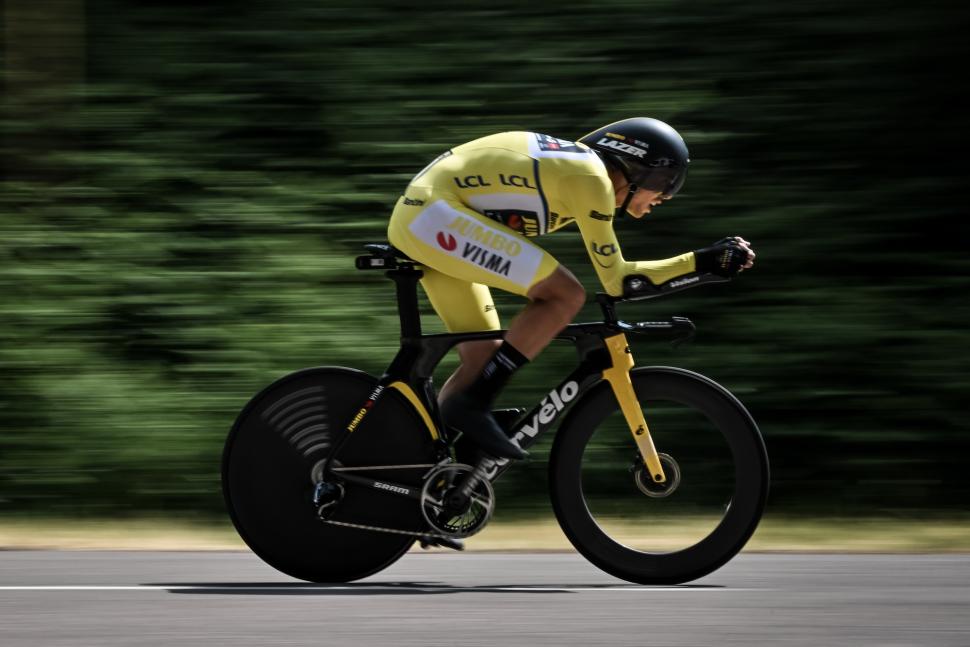
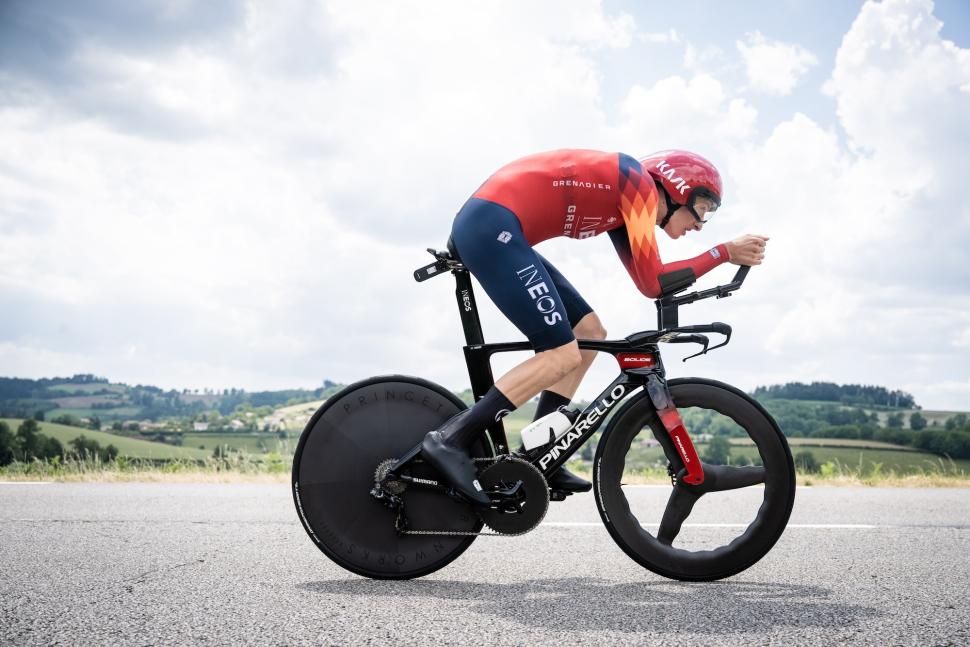
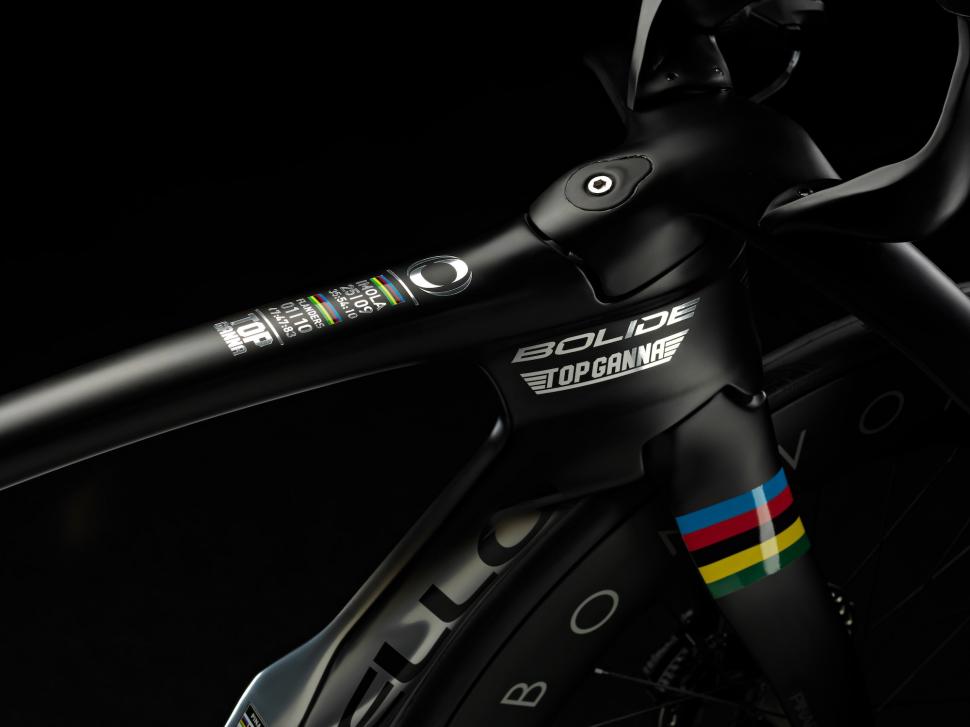
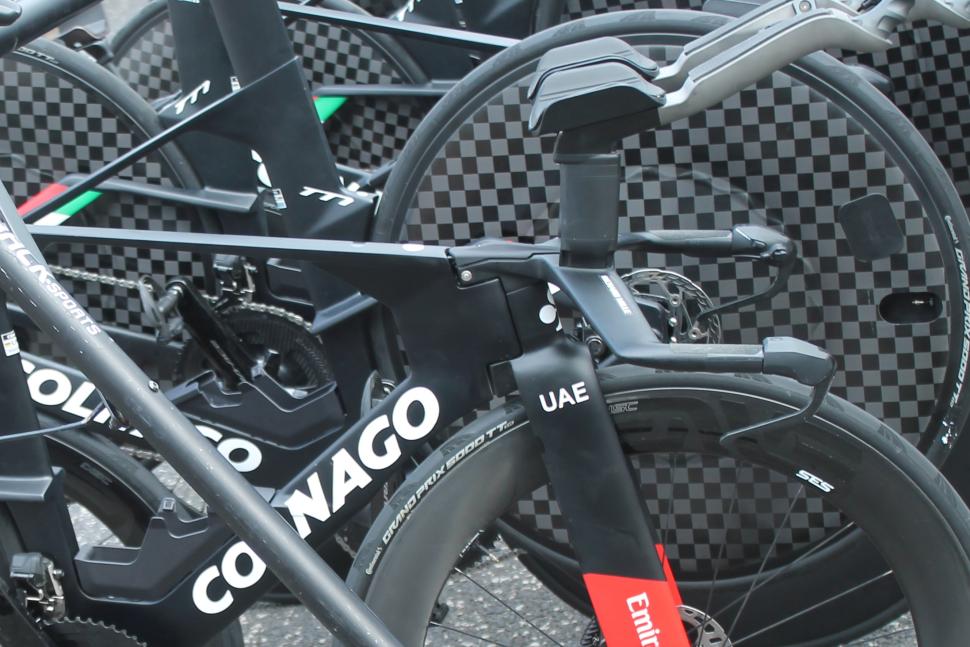
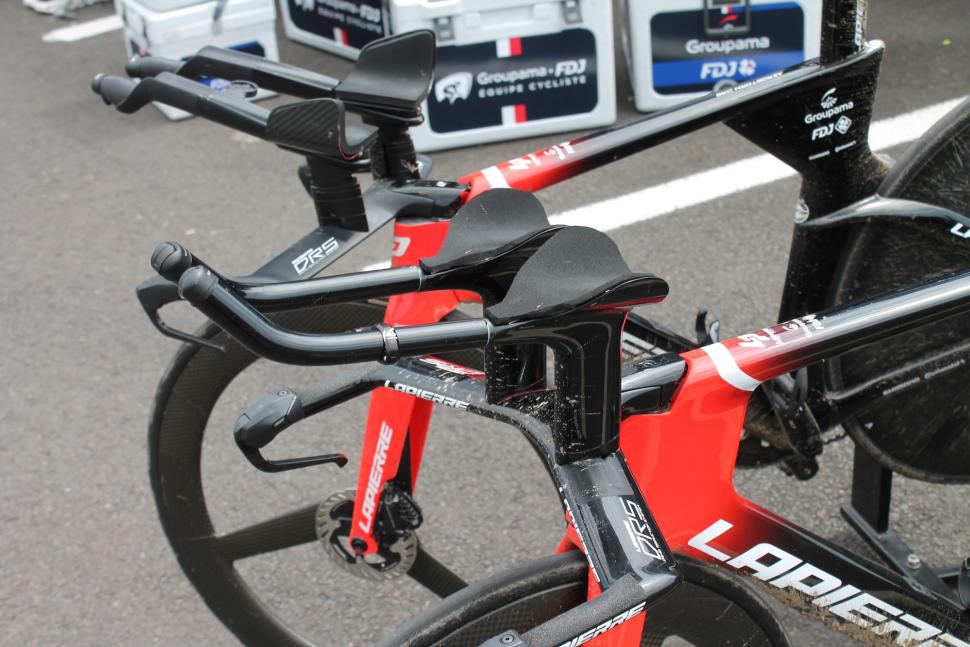
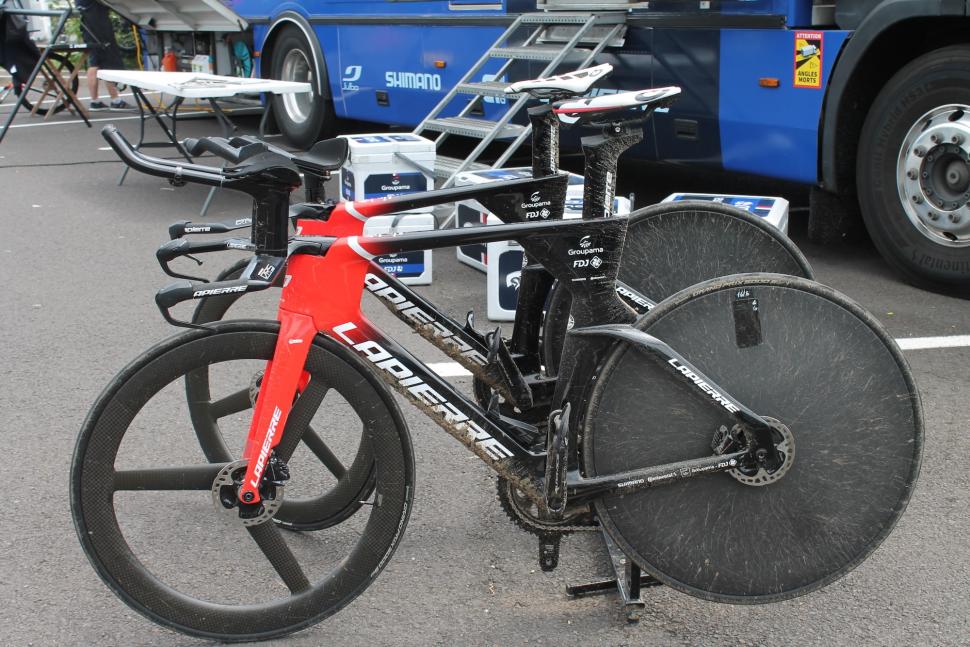
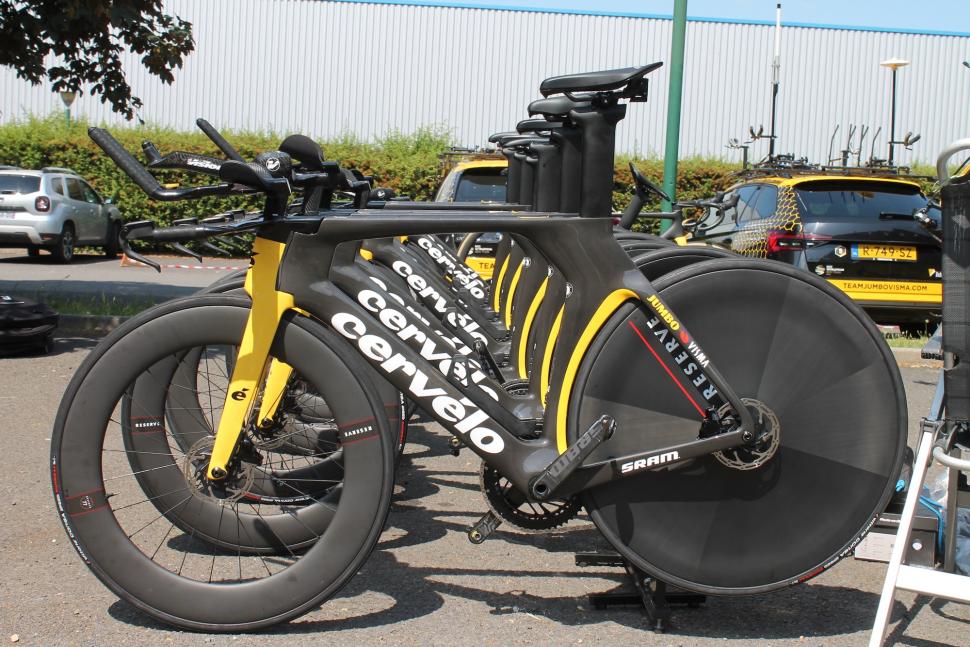
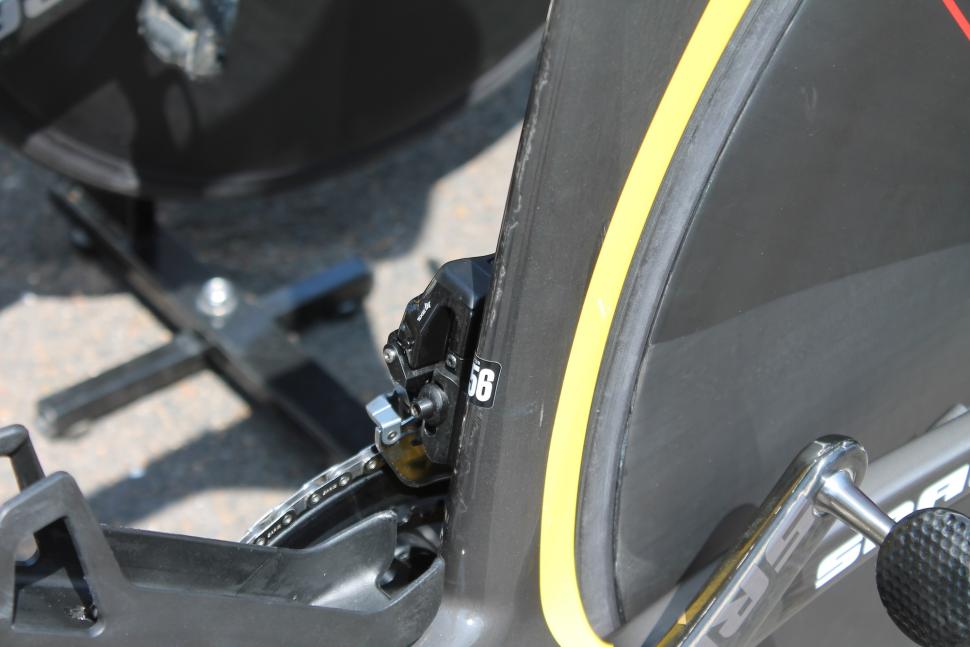
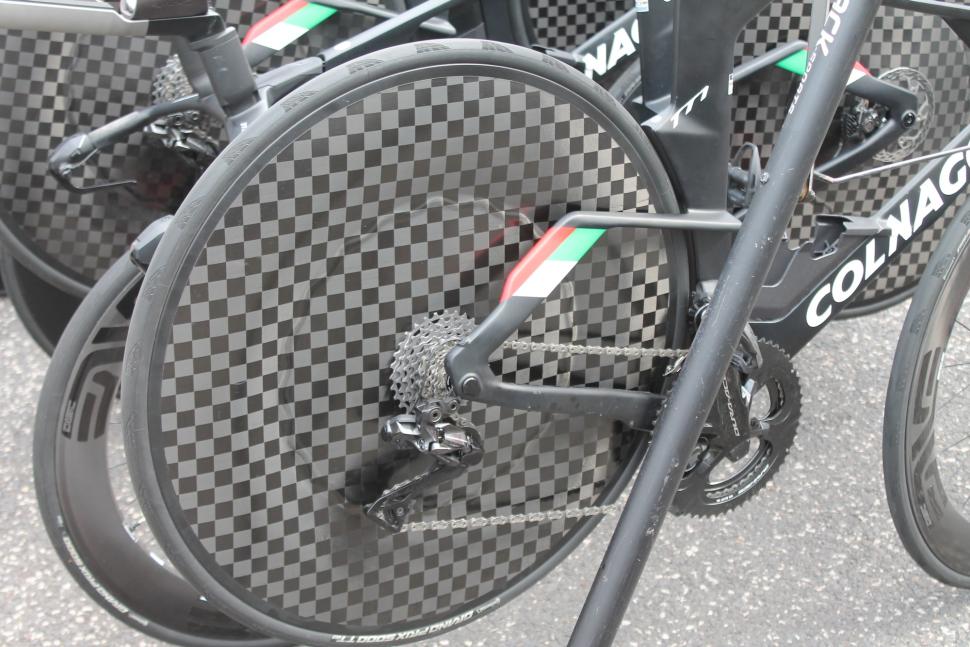
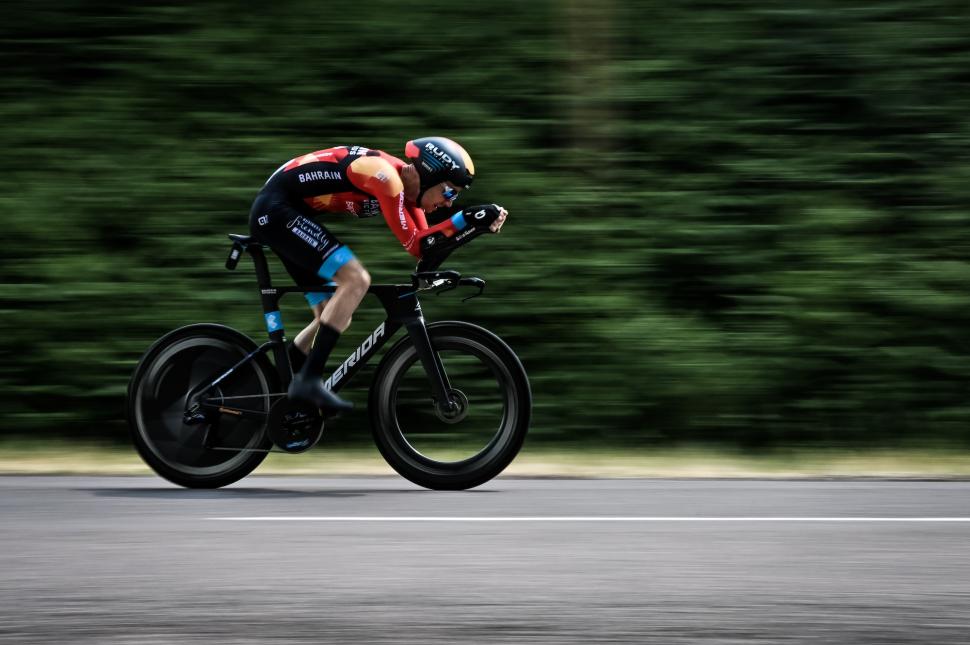
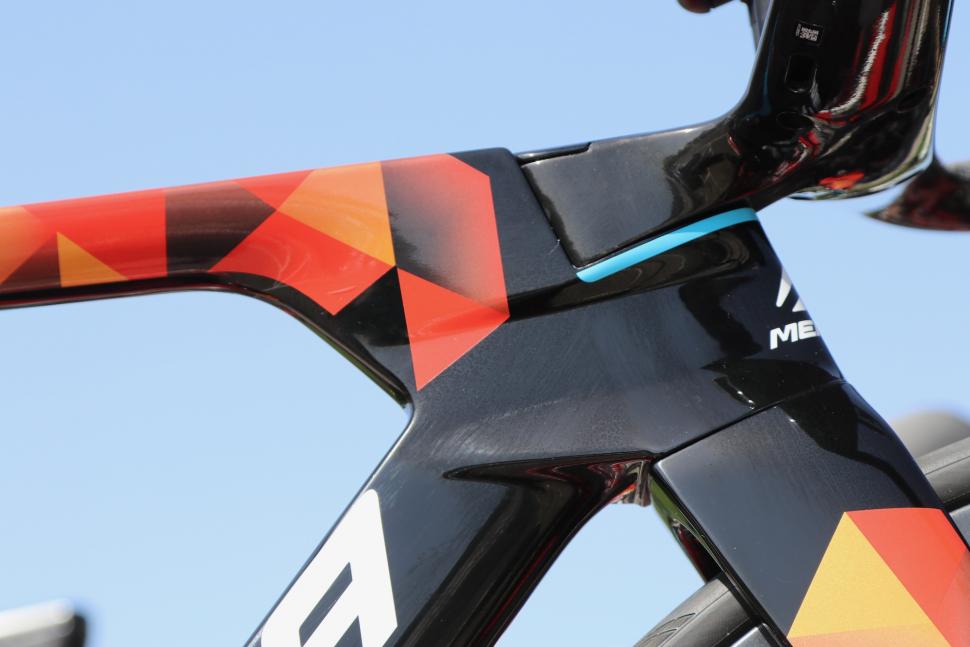
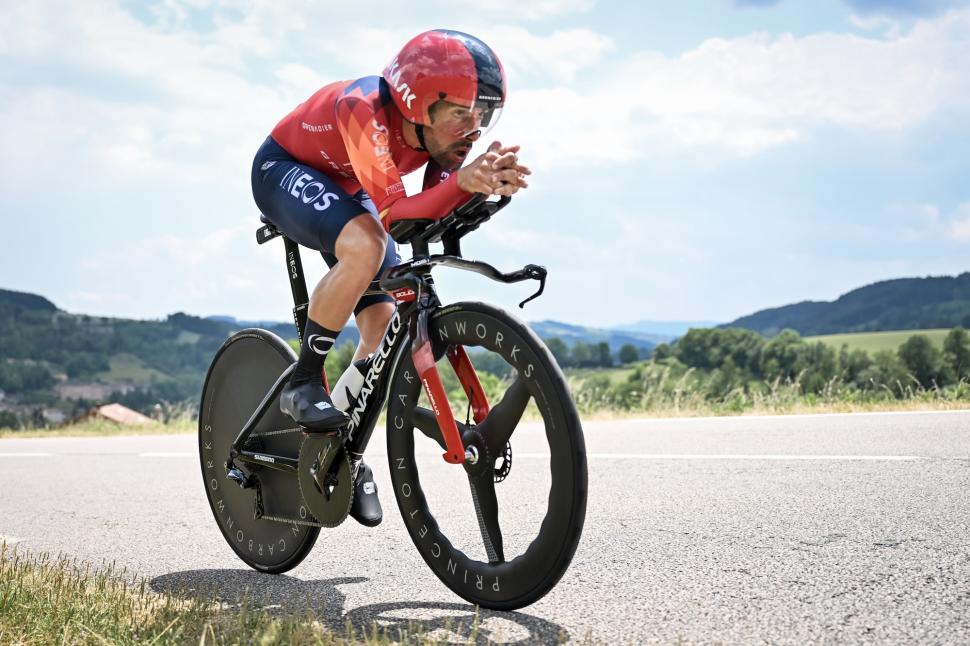
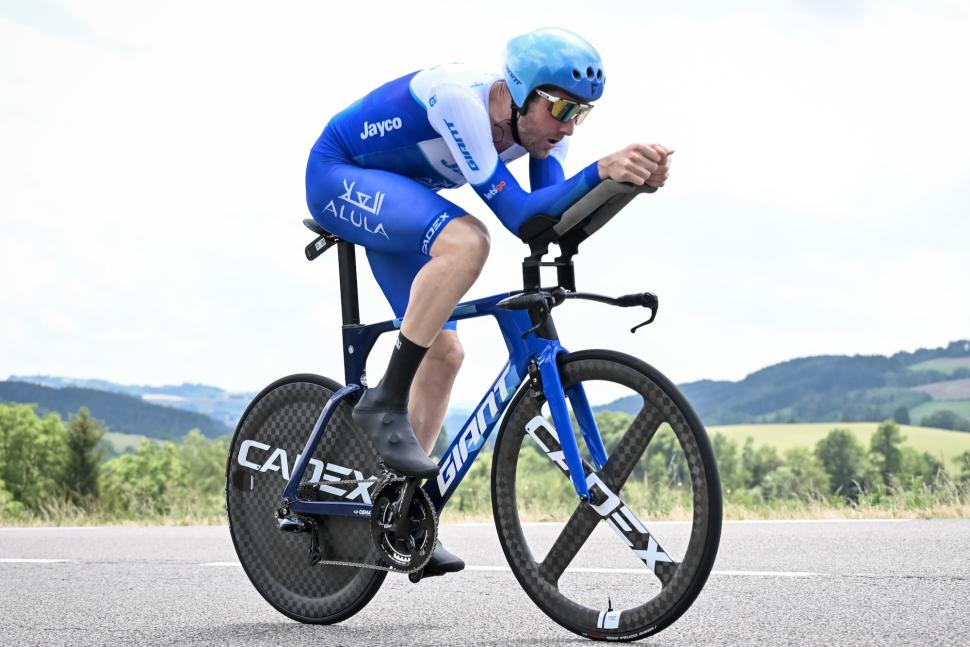
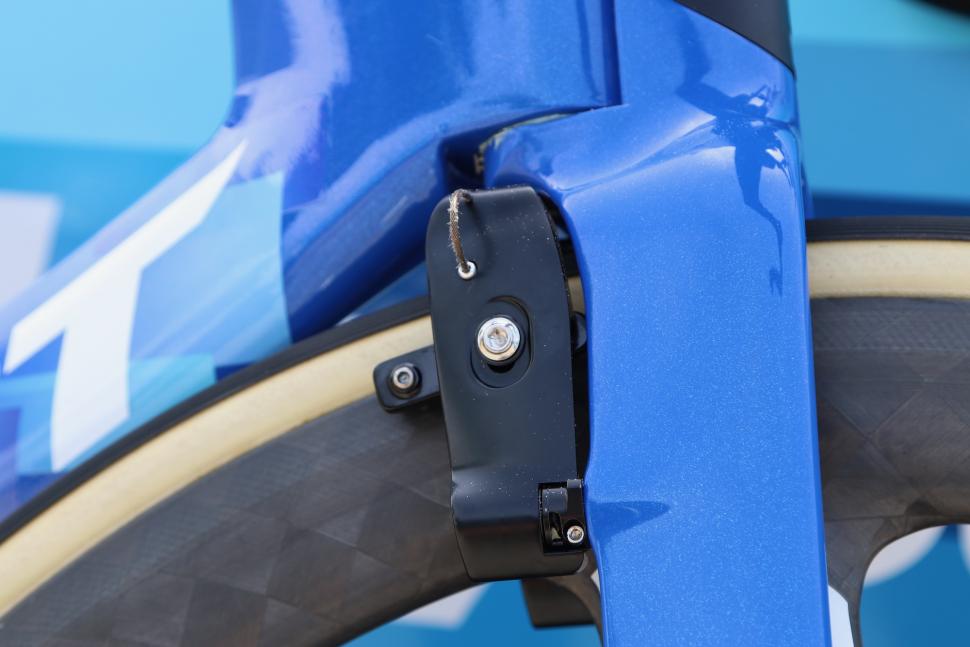
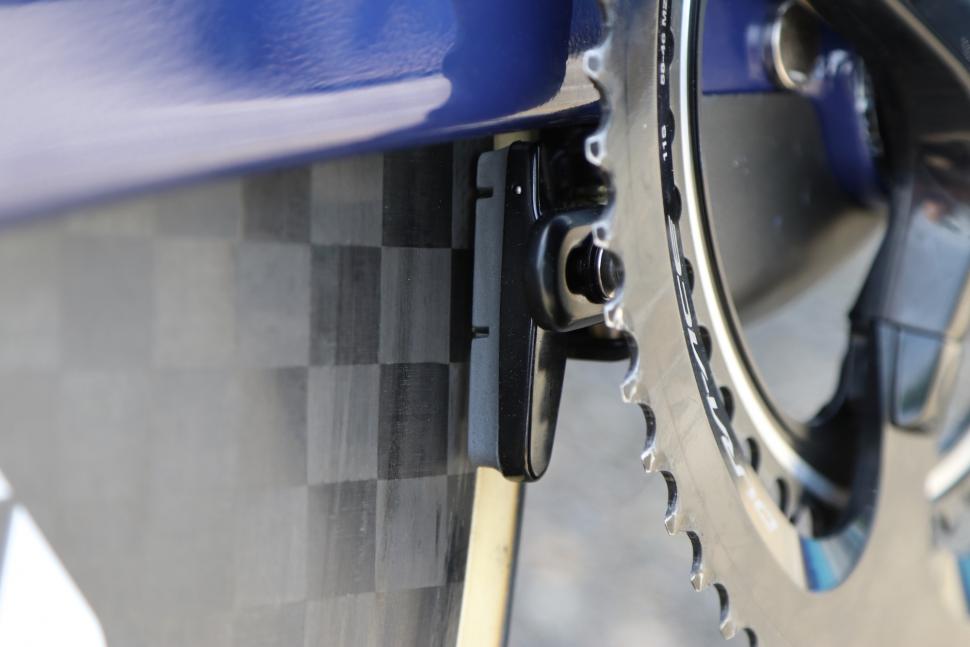
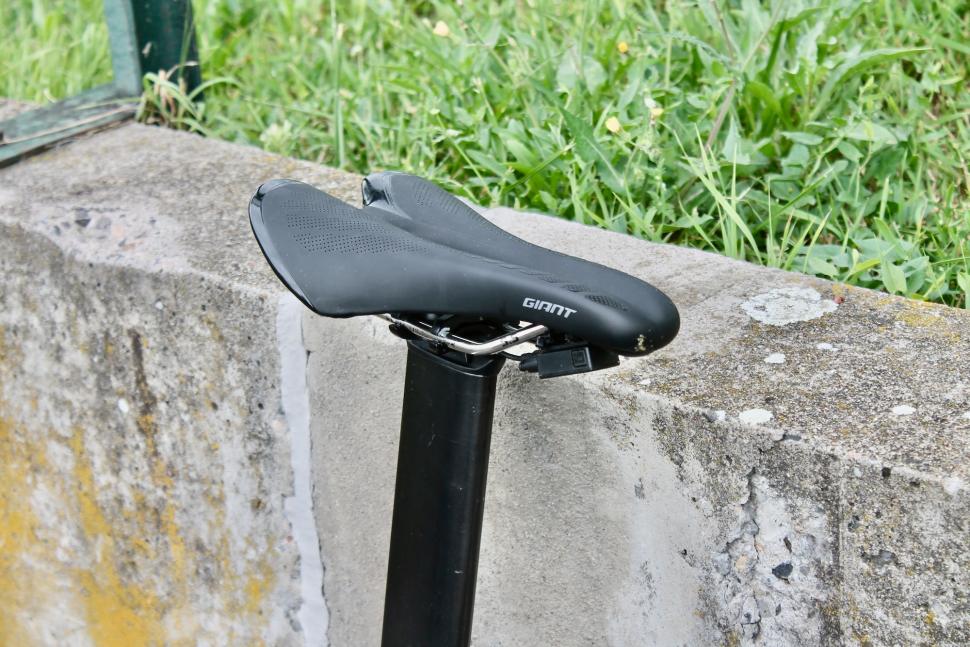

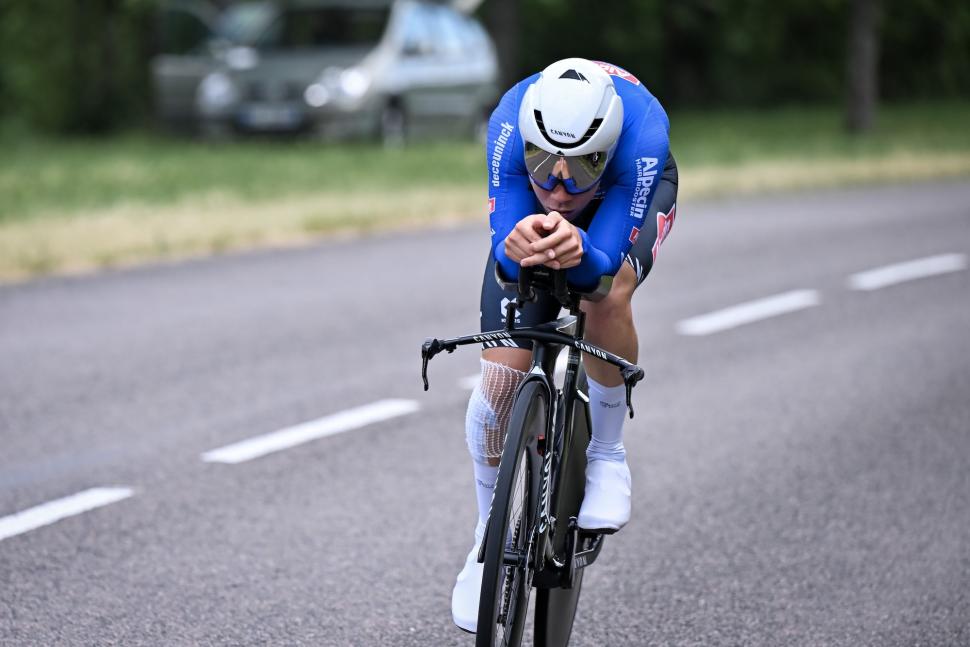
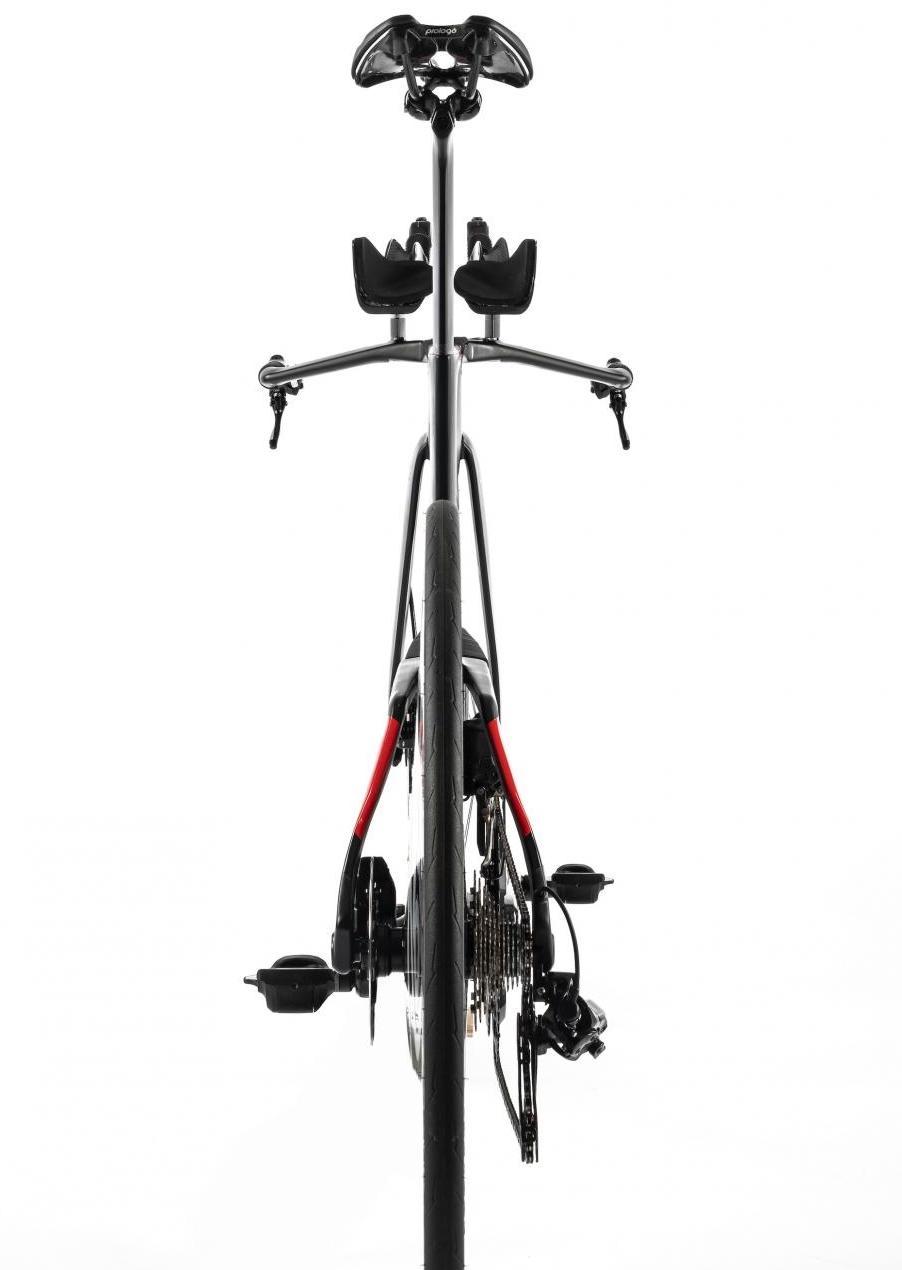
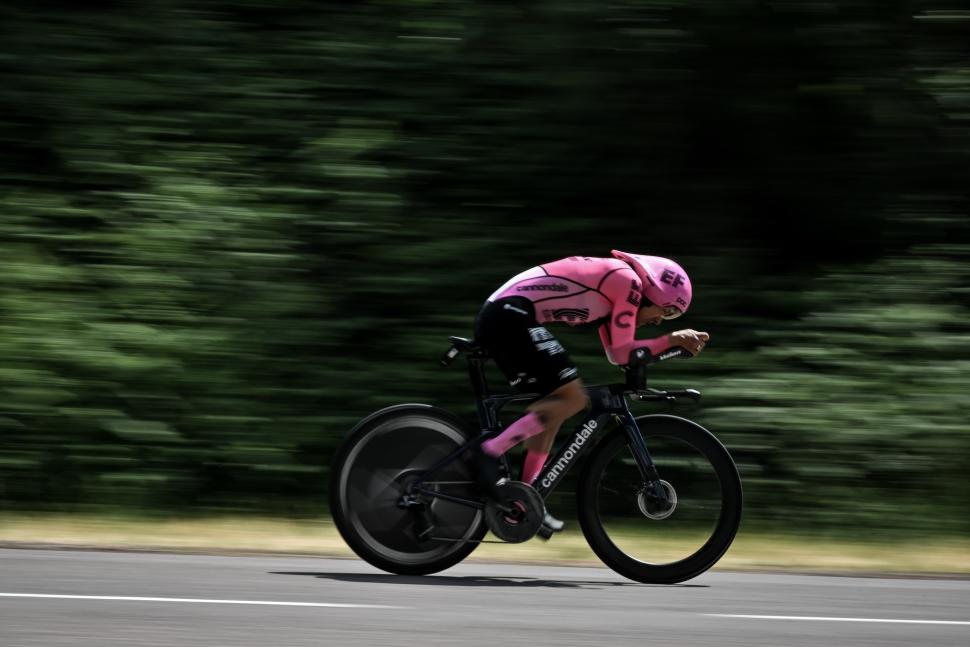
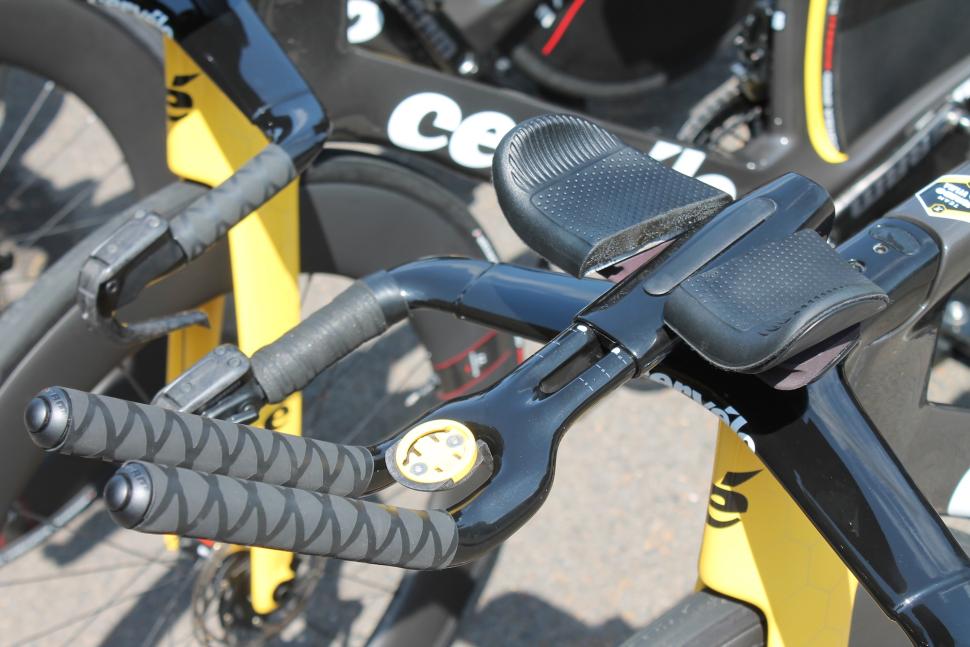
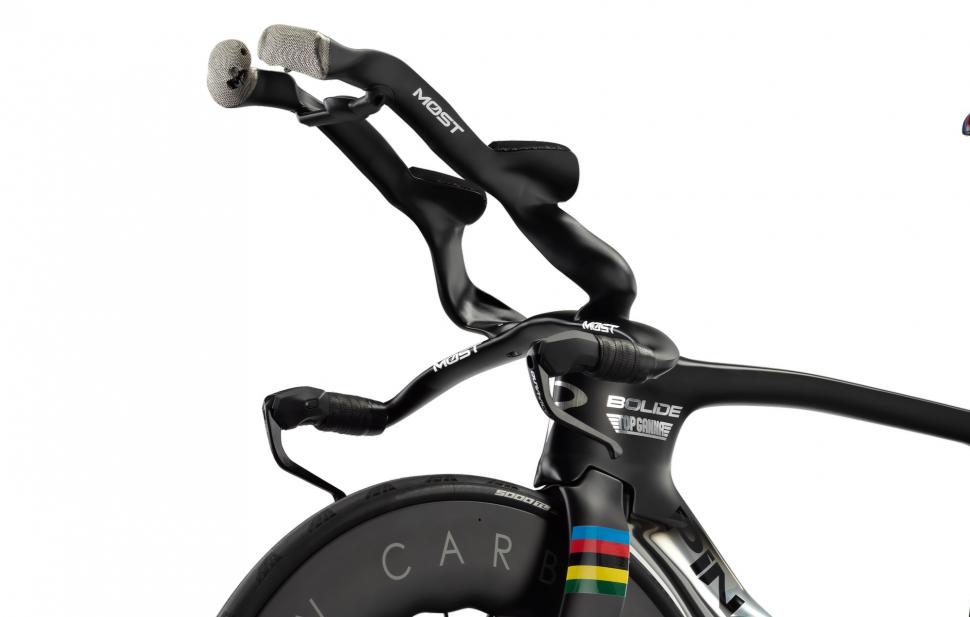
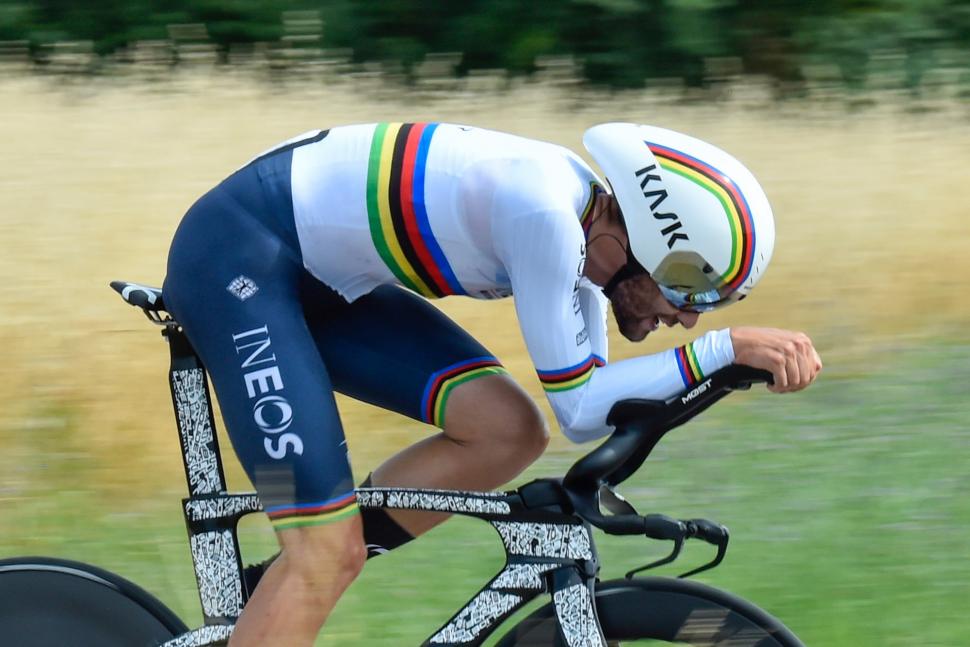
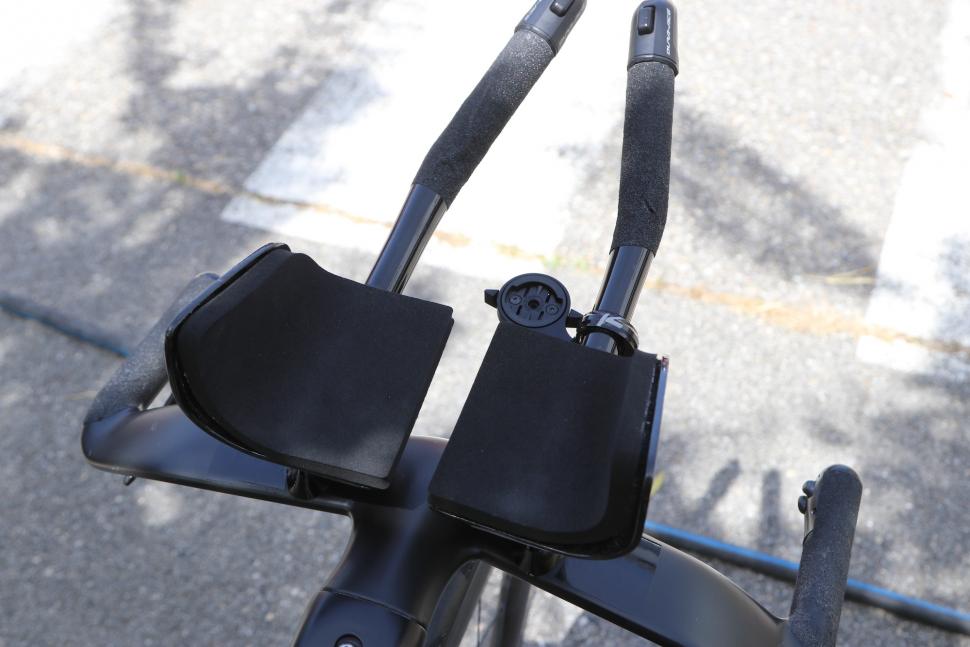
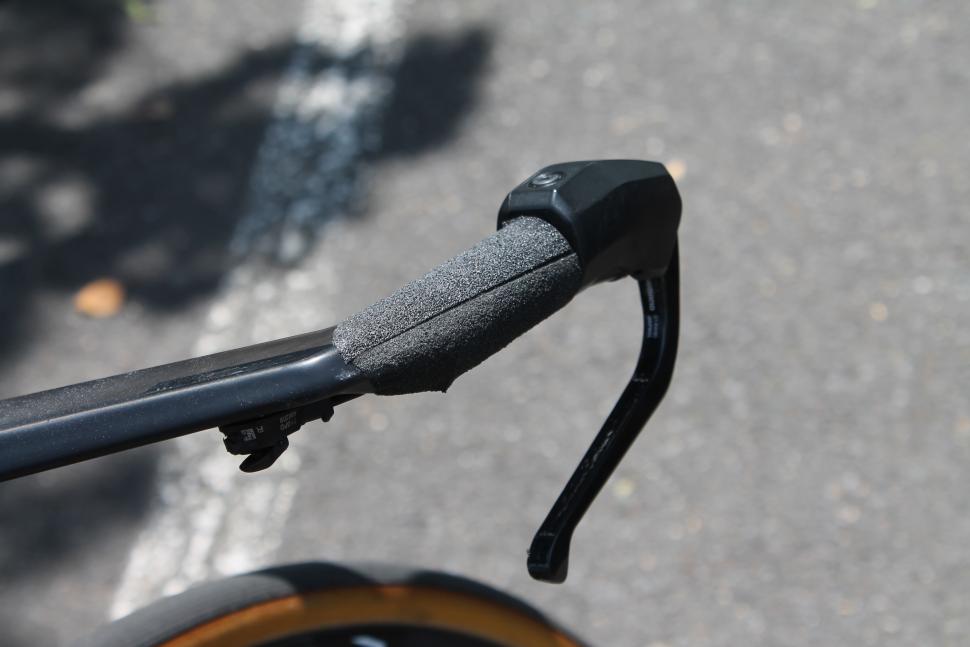
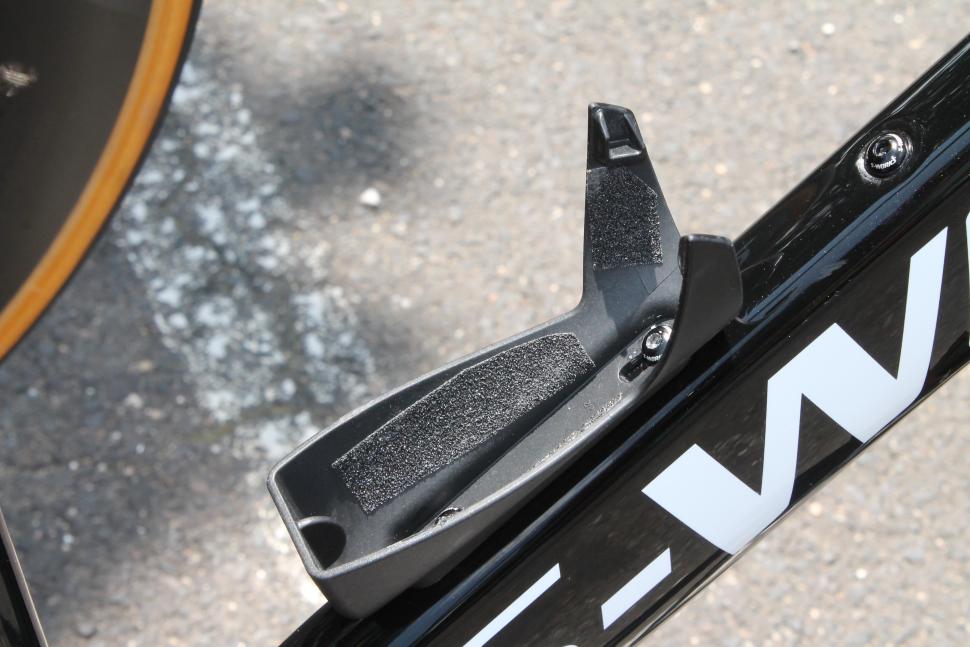

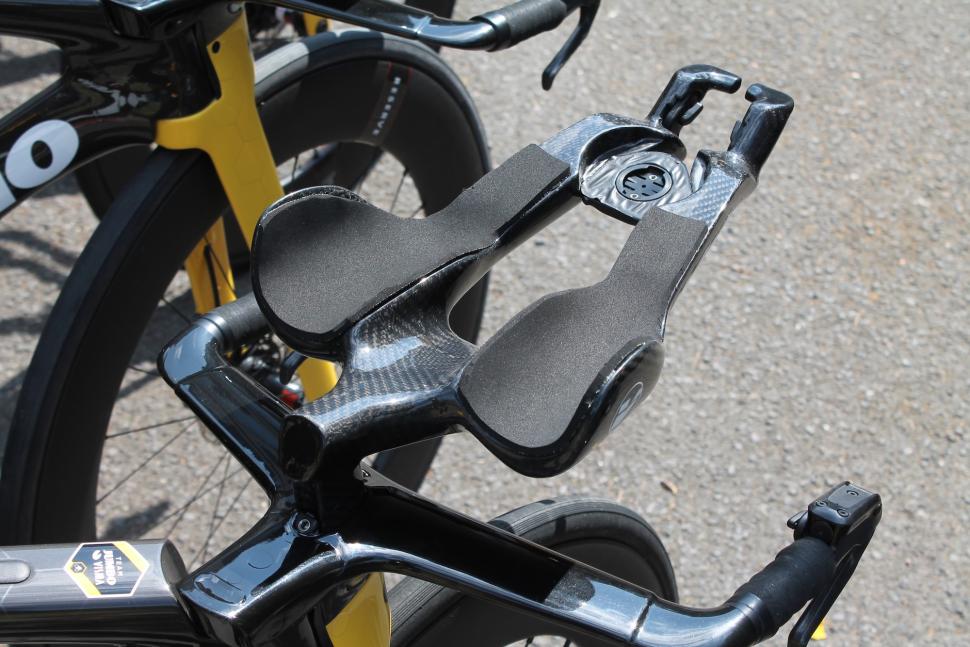
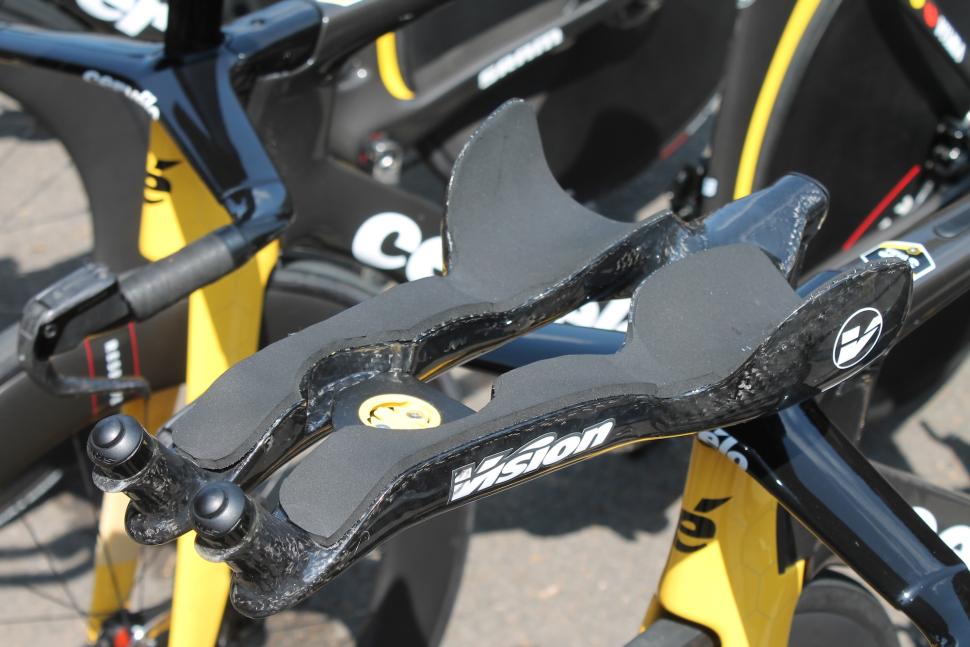
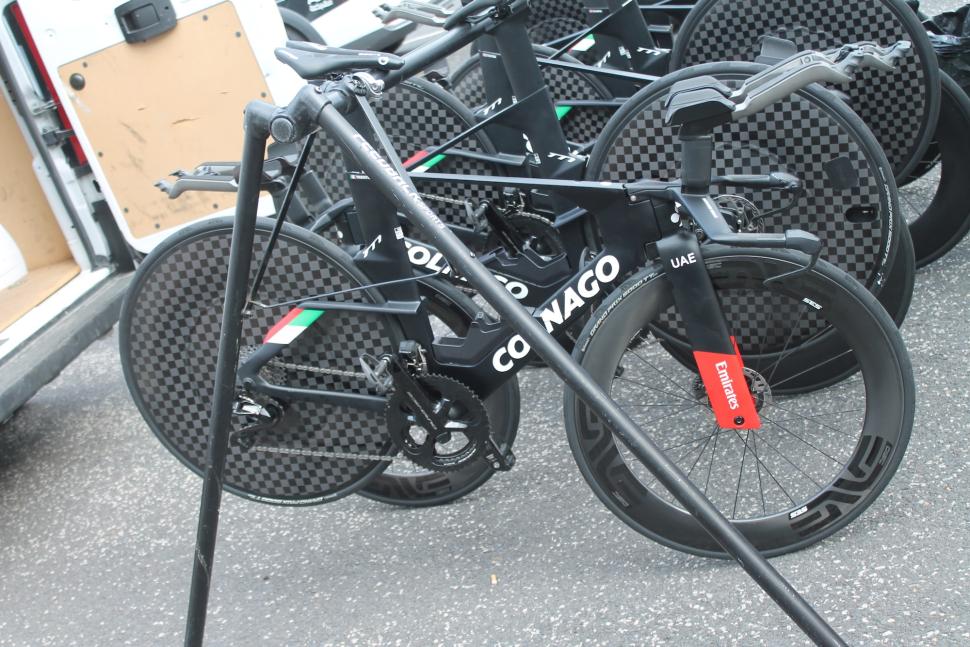
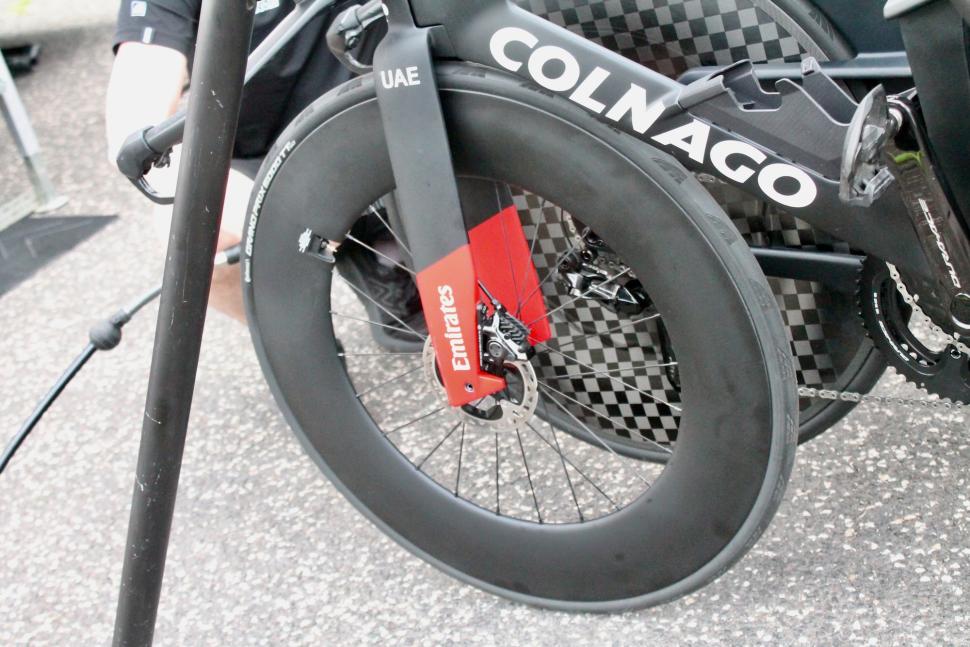
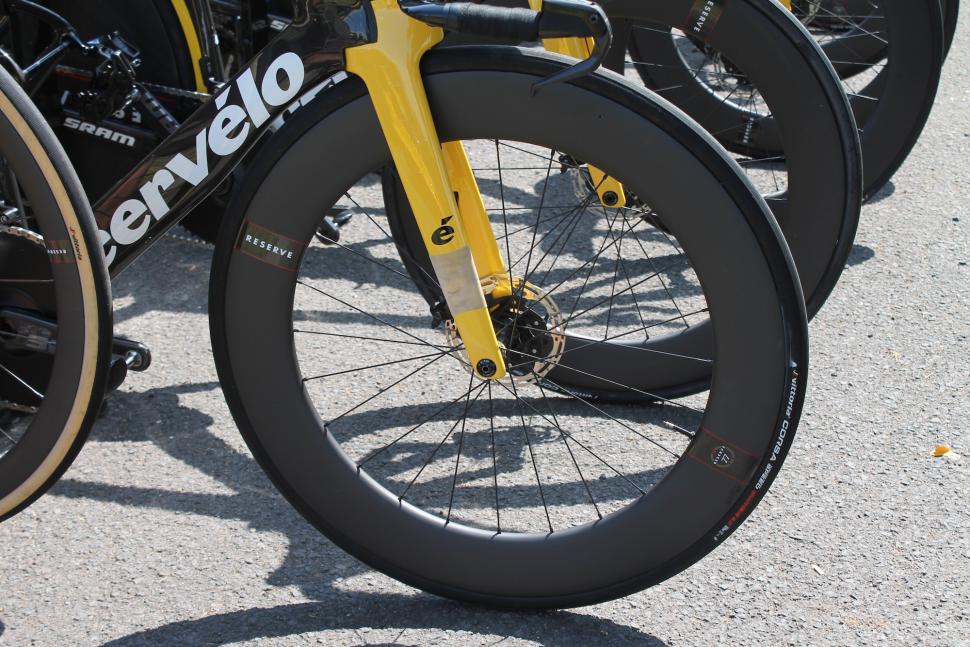
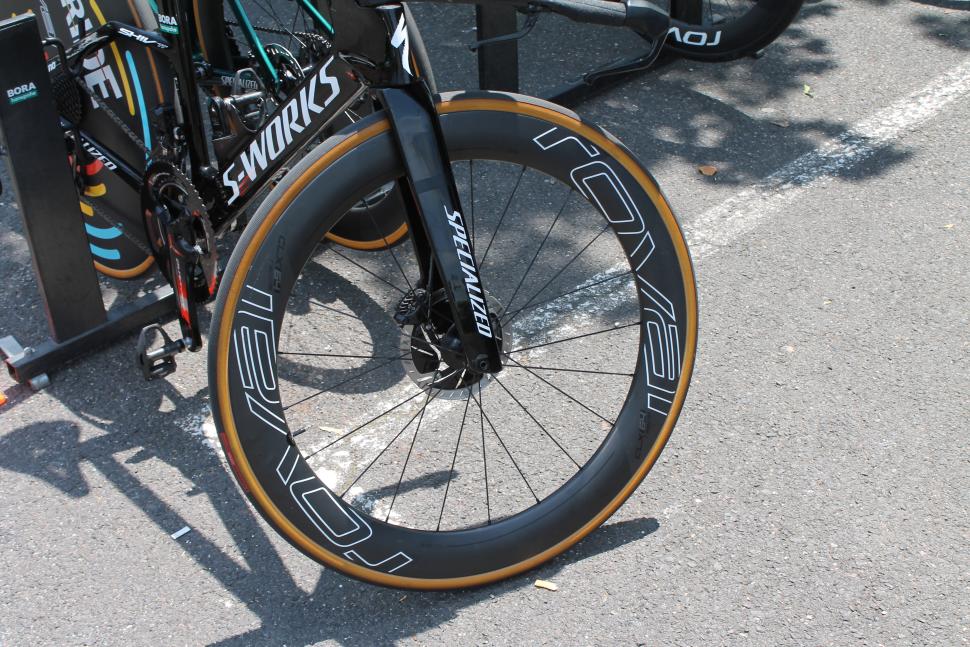
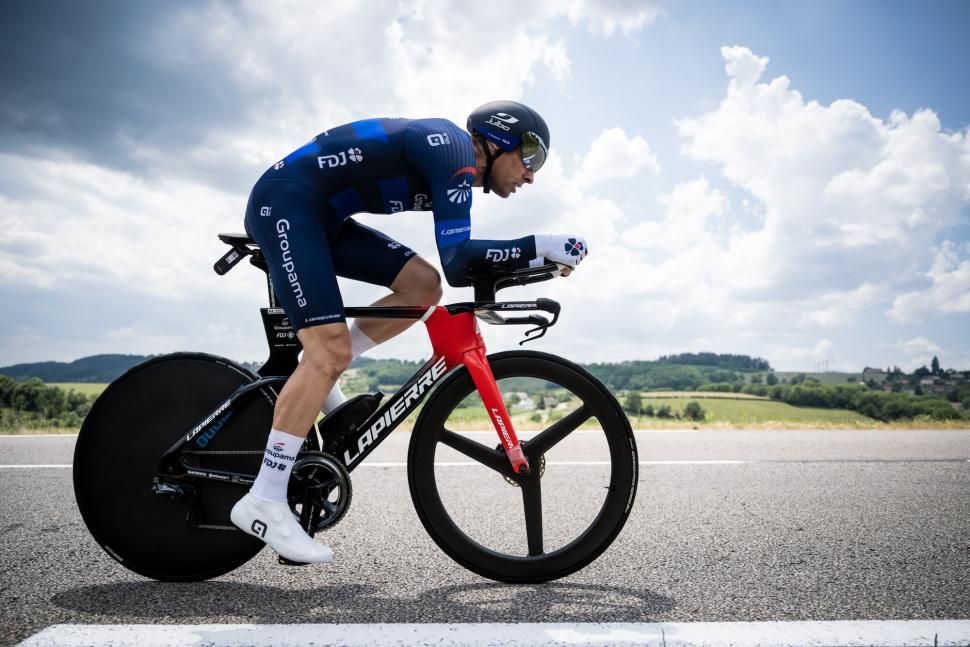
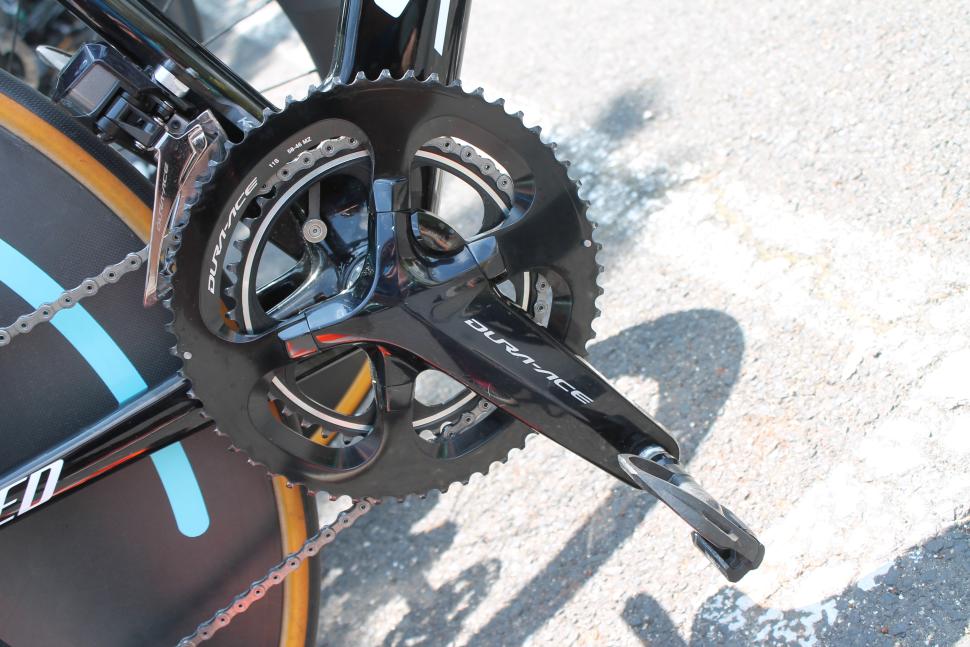

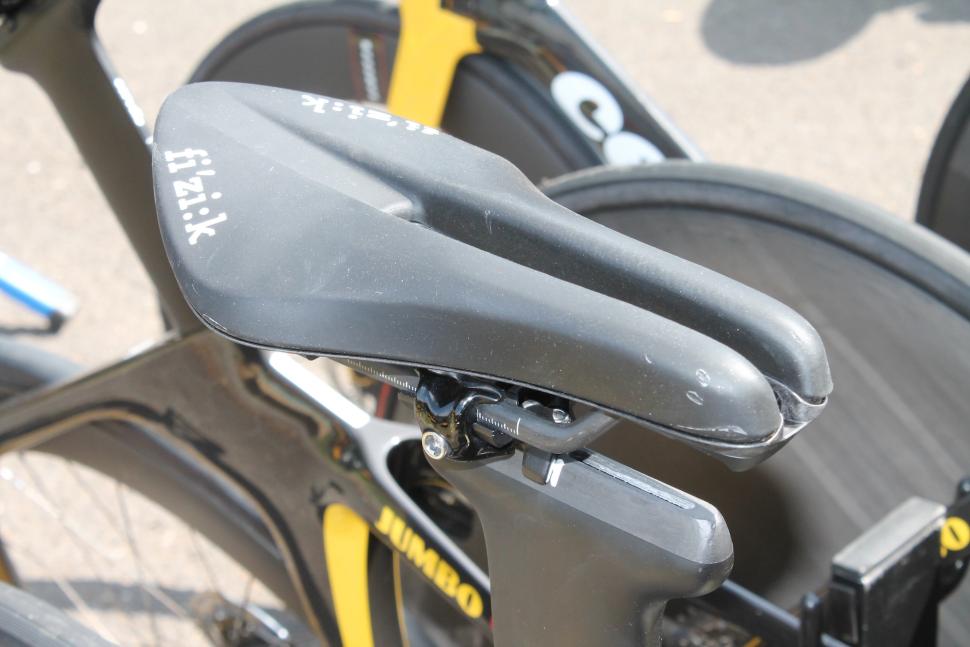
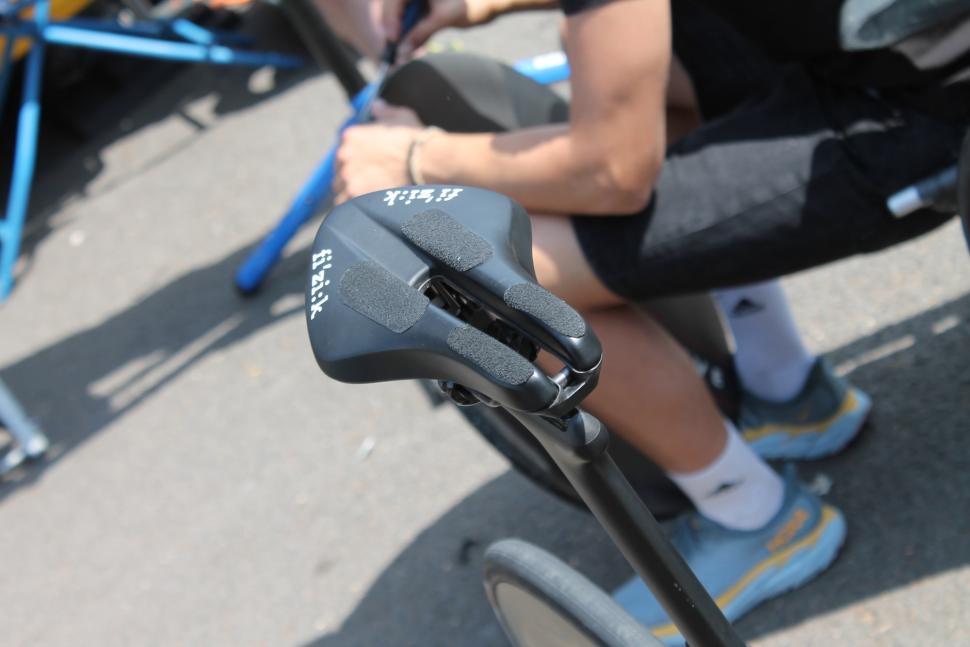
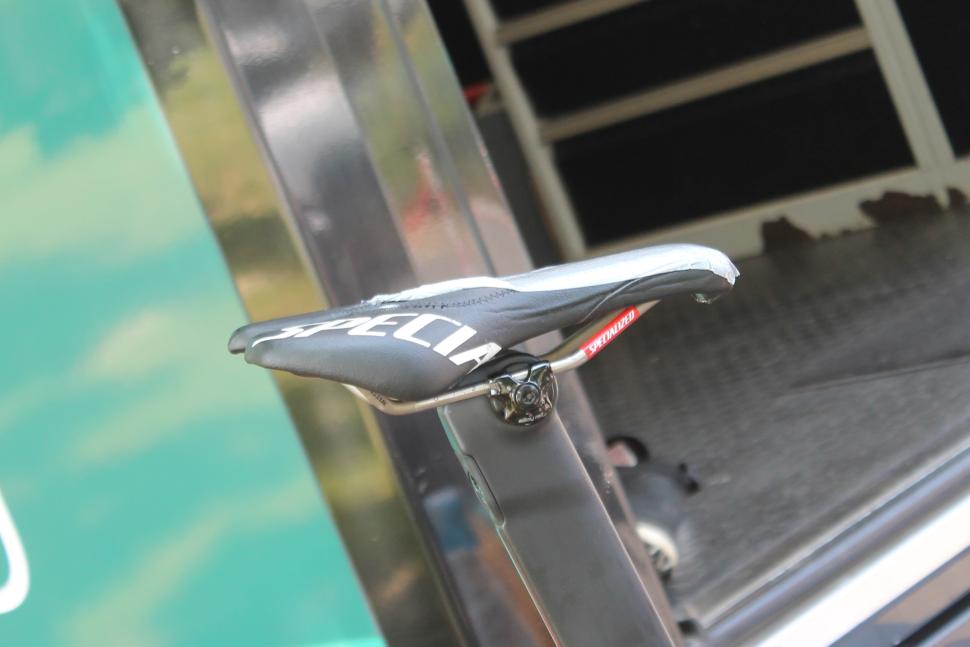
Add new comment
22 comments
Great article. Wasn't expecting to see a bike with Rim brakes still. Surely Jumbo won't use 1x on a hilly stage like this?
Maybe it's a silly question, but is the griptape on bars, bottle cages and saddles the same one used for skateboards? So essentially sandpaper? I'm quite confused!
Ask tony Martin about his tt saddle with grip tape in it (or google it)
I think he used sandpaper rather than grip tape which is where all the problems came in
Wonder what's faster the yellow jersey skinsuit or UAEs - oh wait does he have to ride in the white jersey skinsuit?
Presumably, yes. So that's all level and fair.
I've got a feeling he could decide to wear his national champions skinsuit rather than the young riders one, but I may have made that up.
Fairly sure not (though not 100% positive), the jerseys are compulsory. If he was second in any classification with the leader holding two jerseys (e.g. if JV held yellow and polka dot and TP was second in the mountains classification) I believe he could turn down the opportunity to carry the jersey for the leader in favour of a national jersey, but otherwise it's if you hold it you wear it.
Ah, yes - I think you're right. I knew there'd been a recent case where someone had not worn the classification jersey. I think it was Remco in the Giro and now you say it, I think the circumstances were as you describe.
From the UCI regs
Leader’s jersey of the race and distinctive signs
2.6.018 ............If a rider is leading more than one classification, the order of priority of the distinctive jerseys shall be as follows:
1. general classification by time;
2. general classification by points;
3. general climber's classification;
4. others (young rider, combined, etc.); the order of priority among these other jerseys shall be set by the organiser.
In this situation, the organiser may require another rider next on the relevant classification to wear a jersey which is not being worn by the leader of that classification. However, if this rider must wear his world or national champion's jersey, or the leader's jersey of a UCI cup, circuit, series or classification, he shall wear that jersey.......
If Vingegaard had been eligible for the Young Rider jersey then Pogacar could have worn the UAE National skinsuit, but in this case I think it is a Santini TdF suit for both. In recent years the sponsors suits have got much better. Defeats the purpose of advertising if all it highlights is they are not as good as other brands. Although, it is never going to be as good as the one the clothing company has had months to fit.
Easily UAE's, in fact there was some discussion on yesterday's stage as to whether TP should refrain from attacking JV unless he was certain he could get an advantage of more than a minute, as otherwise the time gain would be more than outweighed by the advantage to JV of wearing his own skin suit while TP wore ASO issue. At least now they will both be wearing ASO suits so it's a level playing field.
Just get rid of special TT bikes in road racing. What does it achieve in sporting terms?
A TT rig is harder to handle than a conventional bike, so there is some additional technique involved, particularly in the wet where bike handling skills are pivotal.
Also, theres a chance for manufacturers/sponsors to showcase more whizzy gear which helps pay the bills.
Agreed though, a road bike TT over that sort of distance would be fascinating to see what these guys can really do when they aren't skulking in the pack.
But did you see the abominations that resulted at the Tour Down Under where there was only a short Prologue TT and so the teams didn't transport dedicated TT bikes? Pello Bilbao's bike looked particularly bad.
I'm sure we could invent all kinds of weirdly handling clown bikes, if we want to test handling skill.
As for manufacturer's wanting to sell stuff. Well, indeed. *That* is the point. That is the point of a lot of the shit in cycling.
But it's terrible for grass-roots racing.
Now you're talking... I remember years ago at Thorpe Park they had bikes which went left when you turned right and you had to ride through an obstacle course. That was a proper test!
Maybe there is room for a special stage run on an interesting bike, say a monocycle, Raleigh Chopper, or Penny Farthing.
Be careful - if you switch you might not be able to go back...
What makes a Tour de France time trial bike so fast?
The guy sat on top of it?
there really isn't a better answer.....
I would really like to see a race between a Tour winner riding an 200£ hybrid commuter bike on flat pedals and an club rider with a state of the art bike.
Not TDF but road.cc did a "bike or rider" hill climb challenge with a keen road.cc writer vs. the then UK champ on a range of increasingly dubious bikes.
Thanks, it was exactly what I wanted. The peugeot was indeed impressive!